
Since the early days of RC flying, pilots have been giving landing advice, particularly if there is any sort of wind involved. However, some have recently been getting it backward when they state that during a normal landing, the ailerons should be used to keep the wings level and the rudder should be used to steer the plane as it approaches the runway. Trying to correct deviations greater than a few degrees with the rudder has, in fact, led to hundreds of full-scale fatalities and countless crashed models over the years. While this misplaced advice might be good for business for some (it leads to more replacement fuselages and airplanes being sold), it’s extremely wasteful and largely avoidable with proper instruction.
When listening to sport fliers, it’s obvious that the overemphasis on rudder during landing is due to the assumption that expert pilots use rudder a lot in general, especially to counter wind during aerobatics. Since a landing in wind supposedly requires more skill, the belief is that the key to good landings must lie in mastering the rudder like the pros.
The reality is that the pros primarily use the ailerons to line up and correct deviations during the approach to landing whether there’s a crosswind or not. If there’s a stiff crosswind, they will then use the rudder to smoothly “kick out the crab” right before the wheels touch, and then obviously continue using the rudder to steer after touchdown.
COURSE CORRECTIONS
This story is from the April 2020 edition of Model Airplane News.
Start your 7-day Magzter GOLD free trial to access thousands of curated premium stories, and 9,000+ magazines and newspapers.
Already a subscriber ? Sign In
This story is from the April 2020 edition of Model Airplane News.
Start your 7-day Magzter GOLD free trial to access thousands of curated premium stories, and 9,000+ magazines and newspapers.
Already a subscriber? Sign In
Legend Hobby / Seagull Models - Cessna Grand Caravan 208
The Cessna Grand Caravan 208 is a legend in aviation circles. A single engine utility aircraft that punches up with capabilities that rival many twin engine aircraft in its class. Its seemingly simple configuration belies its near extreme utility.
PROPER CG LOCATION FOR AEROBATICS
If you are getting into aerobatics and are starting to perform more advanced maneuvers, it is time to discuss ways you can not only become a better pilot, but how you can also improve the flight characteristics of your airplanes.
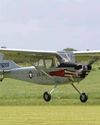
Legend Hobby 13-Foot L-19 Bird Dog/ Cessna O-1
This famous multi-mission single engine observation aircraft served from 1950-1974. From calling out target locations to providing intel/recon information, the Bird Dog was a valued asset in both the Korean War and Vietnam.
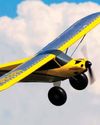
EARN YOUR WINGS
10 Tips for First-Flight Success
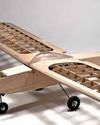
Old School Model Works Fifty Six
The Fifty Six takes its design cues from the original .09- to .15-size Carl Goldberg Falcon 56 of the 1960s. Reworked to incorporate modern, lasercut techniques to make kit building better than ever.
FLYING TWINS Multi-engine warbirds made easy
Let’s face it, there’s just something extra special about twin-engine RC aircraft. Most modelers stop what they’re doing when a twin fires up on the flightline.
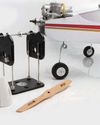
HOW TO BALANCE PROPELLERS
Four easy steps to increase performance and reduce vibration
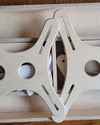
PRODUCT REVIEW: RC PLANE STANDS BENCHTOP MODEL
I’m a sucker for shop stuff. I buy tools I will probably never use just because they are cool, or I might need to use them someday. When Glen from RC Plane Stands reached out about a review, however, I knew as soon as I browsed their website that I would be receiving something I would use a lot, maybe even daily.
SPIRIT OF RHINEBECK AWARD WINNER
A close up of Norman Malinowski’s 1/3-scale Albatros
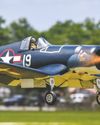
CENTER OF GRAVITY BASICS
The secret to a plane that flies well